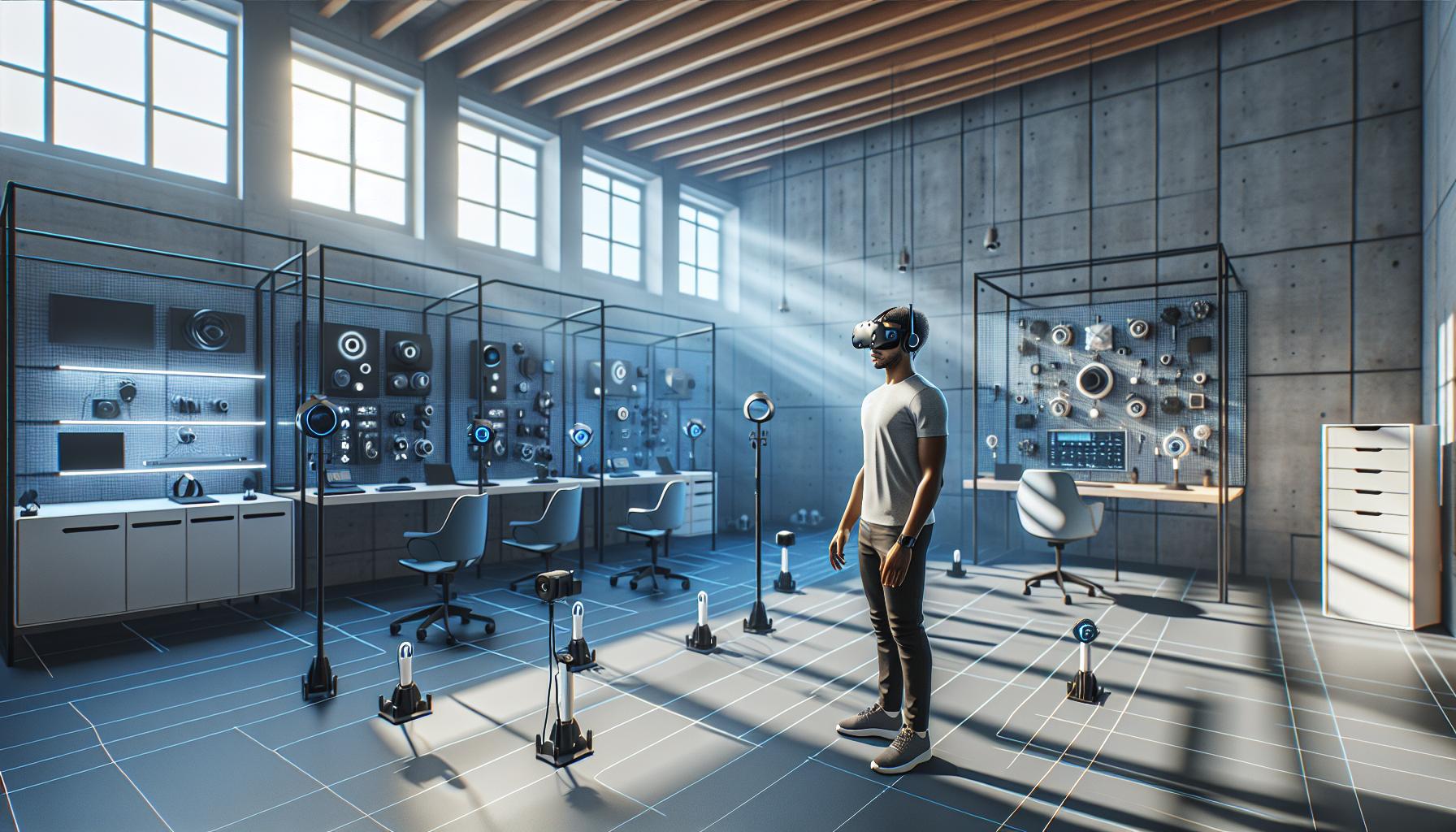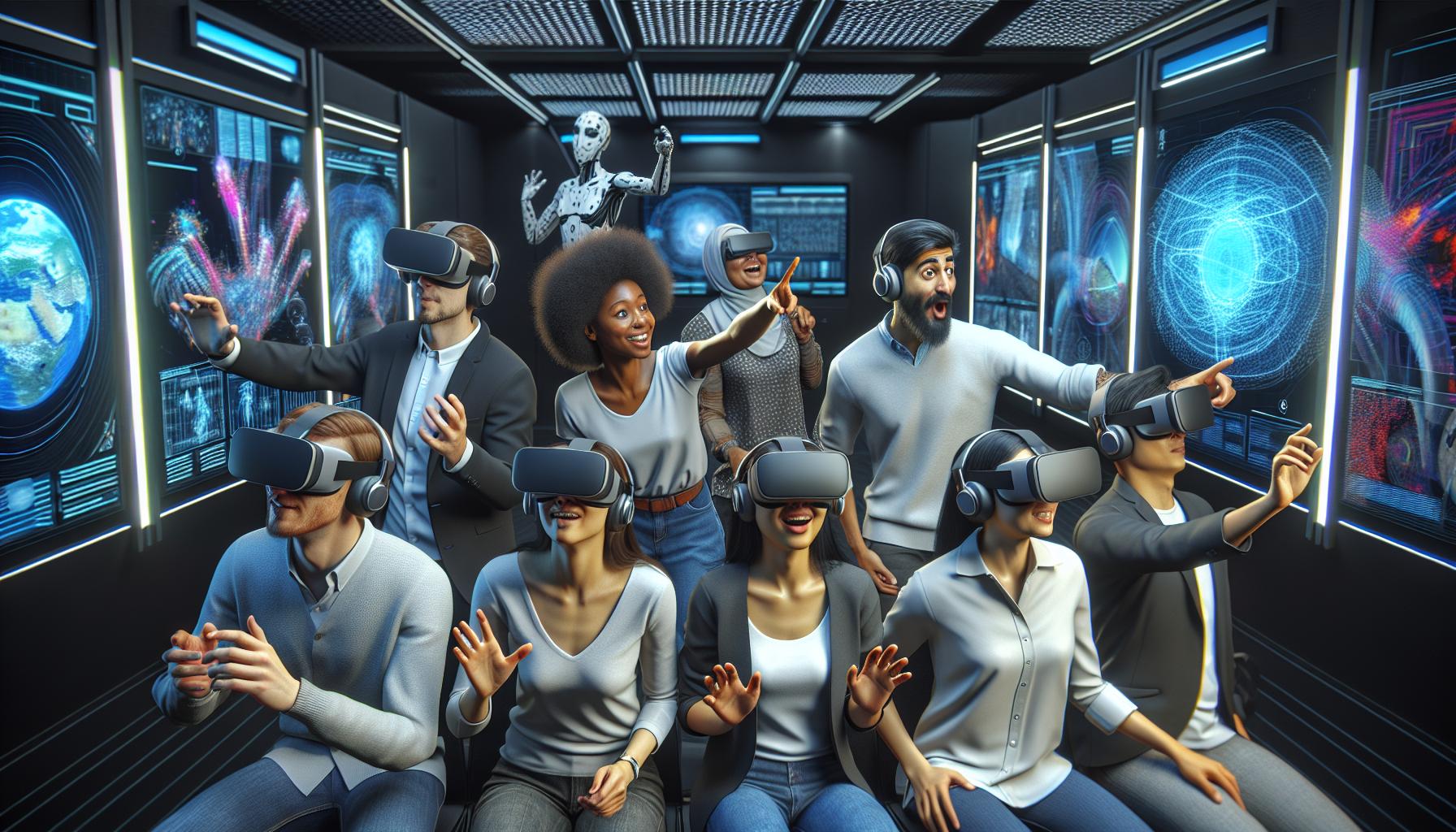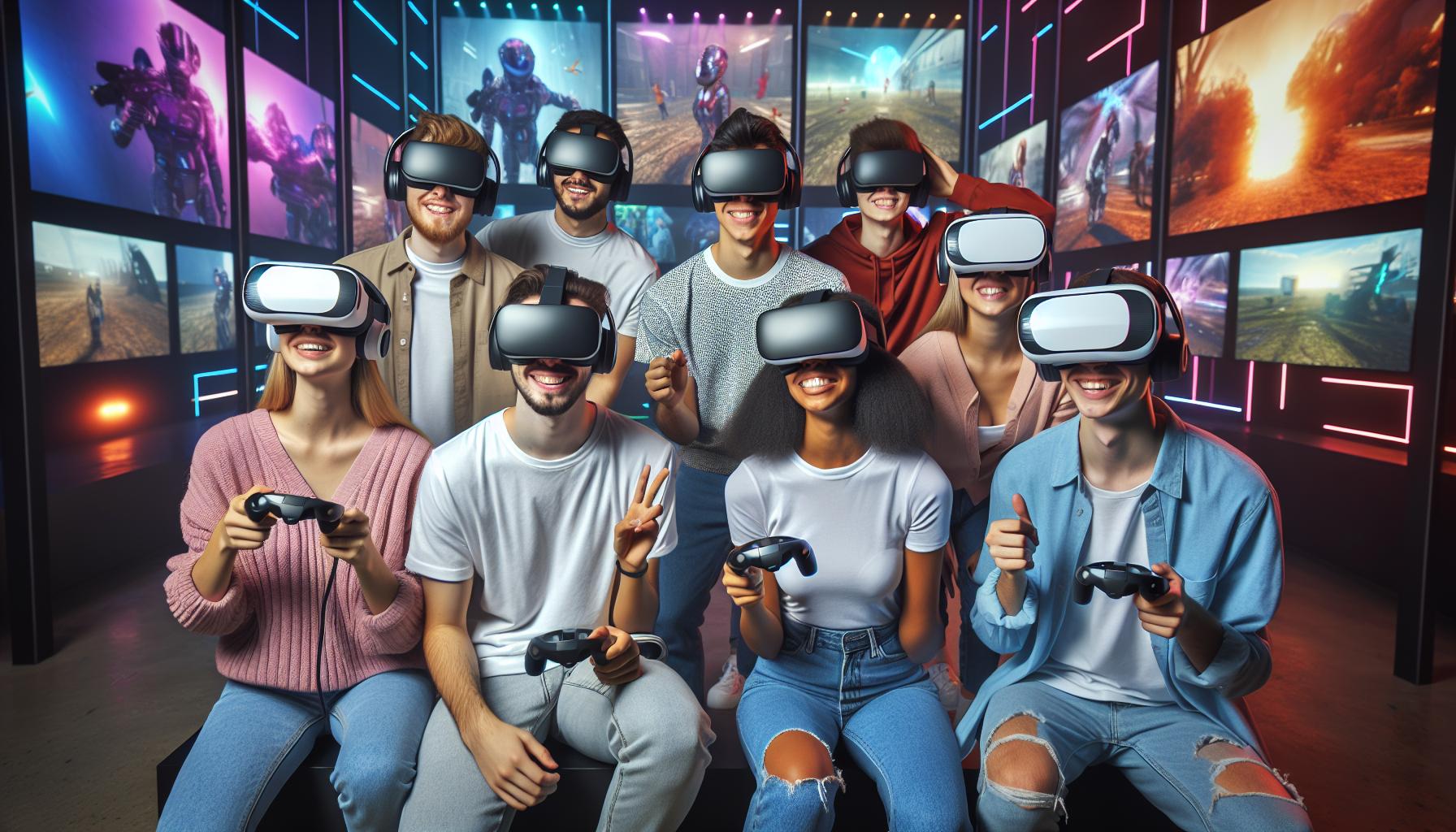Key Takeaways
- Immersive Experiences: Virtual reality rooms create dynamic 3D environments that engage multiple senses, providing users with authentic and memorable interactions that surpass traditional media.
- Advanced Technology: Key components like VR headsets, motion tracking systems, high-fidelity sound systems, and haptic feedback devices are essential for optimizing user engagement in VR rooms.
- Space Considerations: Effective VR rooms require sufficient space (minimum 10×10 feet) and proper ventilation to ensure user comfort and safety while allowing unrestricted movement.
- Enhanced Learning: VR rooms revolutionize education and training by contextualizing theoretical knowledge through interactive simulations that foster collaboration and improve retention rates.
- Diverse Applications: Beyond gaming, virtual reality rooms are effective in sectors such as education, therapy, and entertainment, offering innovative experiences for both personal and professional development.
- Social Connectivity: These immersive environments facilitate social interactions by connecting multiple users, promoting collaboration and community engagement in virtual settings.
Virtual reality rooms are transforming the way people experience entertainment, gaming, and even education. These immersive spaces allow users to step into entirely different worlds, engaging their senses in ways traditional media can’t match. With cutting-edge technology, they create a sense of presence that pulls users into the action, making every moment feel incredibly real.
As virtual reality continues to evolve, its applications expand beyond just gaming. From virtual meetings to interactive learning environments, the potential of VR rooms is becoming increasingly clear. This article explores the various features and benefits of virtual reality rooms, highlighting why they’re becoming essential in both personal and professional settings.
Virtual Reality Room
Virtual reality rooms serve as dedicated spaces designed for immersive VR experiences. These environments utilize advanced technology to create realistic simulations that engage users in diverse activities like gaming, training, or virtual meetings.
Key components of virtual reality rooms include:
- VR Headsets: Devices that display 3D environments, allowing users to interact with digital elements.
- Motion Tracking: Sensors that detect user movements, enhancing interactivity and immersion.
- Sound Systems: High-fidelity audio setups that provide spatial awareness, contributing to a deeper experience.
- Physical Spaces: Configured areas accommodating movement, equipped with VR furniture and safety measures.
VR rooms enhance user experiences by promoting engagement through multi-sensory interactions. They also enable social connections in virtual settings, allowing multiple users to participate simultaneously, fostering collaboration and communication. As applications expand, VR rooms become essential in various sectors, transforming how individuals experience entertainment, education, and professional development.
Key Features of Virtual Reality Rooms

Virtual reality rooms are designed to provide immersive experiences through advanced equipment and technologies. These spaces require careful consideration of the necessary components and the physical environment to optimize user engagement.
Equipment and Technology
Equipment and technology play a crucial role in the effectiveness of VR rooms. Key elements include:
- VR Headsets: Devices like the Oculus Quest, HTC Vive, and Valve Index deliver stunning 3D visuals, immersing users in virtual environments.
- Motion Tracking Systems: Technologies such as external sensors and built-in cameras enable precise tracking of user movements, ensuring natural interactions.
- High-Fidelity Sound Systems: Surround sound setups enhance the immersive experience by creating spatial audio effects, which make users feel present in the virtual world.
- Haptic Feedback Devices: Wearable technology, such as gloves or suits, simulates touch sensations, providing users with a realistic experience.
- Powerful Computers: High-performance PCs or gaming consoles provide the necessary processing power to run complex VR applications smoothly.
Space Requirements
Space requirements impact the functionality and enjoyment of virtual reality rooms. Essential considerations include:
- Room Size: A minimum area of 10×10 feet allows for free movement, reducing the risk of collisions and enhancing user comfort.
- Ceiling Height: An adequate ceiling height of at least 8 feet ensures users can move freely without obstruction.
- Clearance Space: A clutter-free environment promotes safety, allowing users to explore their virtual surroundings without physical barriers.
- Ventilation: Proper airflow maintains comfort during extended use, ensuring an enjoyable experience without overheating.
- Wireless Connectivity: A reliable Wi-Fi connection supports seamless interaction with online applications and multiplayer experiences.
These features help establish an optimal environment for users to engage with virtual reality effectively and safely.
Benefits of Using a Virtual Reality Room

Virtual reality rooms offer an array of benefits, enhancing user engagement and fostering effective learning experiences. These immersive environments cater to various sectors, presenting novel opportunities for entertainment, education, and professional development.
Immersive Experiences
Immersive experiences stand as a cornerstone of virtual reality rooms. Users engage with dynamic 3D environments that feel authentic and responsive. They experience lifelike interactions through motion tracking, enabling real-time movement and exploration. High-fidelity sound systems create spatial awareness, placing users in an auditory landscape that mirrors real-world scenarios. Such immersive elements enhance emotional responses and create memorable interactions, elevating entertainment and social engagements in ways that traditional media cannot achieve.
Enhanced Learning and Training
Enhanced learning occurs in virtual reality rooms through interactive simulations and experiential training. Learners immerse themselves in realistic scenarios, such as medical procedures or complex machinery operations, reinforcing theoretical knowledge with practical application. Research indicates that VR-based training outcomes surpass traditional methods, yielding higher retention rates and skill proficiency. Additionally, virtual classrooms foster collaborative experiences by connecting multiple users in shared spaces, enhancing peer learning and engagement in educational settings. As such, VR rooms revolutionize professional and academic training landscapes, offering innovative solutions for diverse learning needs.
Popular Applications of Virtual Reality Rooms

Virtual reality rooms offer a wide range of applications that enhance user experiences across various sectors. Their immersive capabilities make them particularly effective in gaming, entertainment, education, and therapy.
Gaming and Entertainment
Gaming experiences significantly benefit from virtual reality rooms. Players engage with expansive 3D worlds, fostering a strong sense of presence. Titles like “Beat Saber” and “Half-Life: Alyx” demonstrate how VR enhances gameplay through interactive mechanics. Multiplayer experiences enable friends to connect in a shared virtual environment, adding social dimensions to gaming. Events such as VR concerts allow users to attend performances from the comfort of their homes, blending music and visuals in innovative ways.
Education and Therapy
Virtual reality rooms revolutionize education by providing immersive learning environments. Students engage in interactive simulations that bring complex concepts to life. Programs like “Labster” allow learners to conduct virtual science experiments, enhancing their understanding of theoretical content. In therapeutic settings, VR supports exposure therapy for anxiety disorders and PTSD, offering controlled environments for gradual desensitization. Applications in rehabilitation use VR to motivate physical therapy through engaging exercises, improving patient outcomes.
Revolutionizes Education And Therapy
Virtual reality rooms are redefining how individuals engage with technology across various sectors. Their immersive nature not only enhances entertainment and gaming experiences but also revolutionizes education and therapy. As VR continues to evolve, the potential applications will likely expand, making these dedicated spaces even more integral to personal and professional interactions.
The combination of advanced equipment and thoughtfully designed environments fosters meaningful connections and learning opportunities. With the growing accessibility of VR technology, the future looks promising for anyone looking to explore the limitless possibilities of virtual reality.